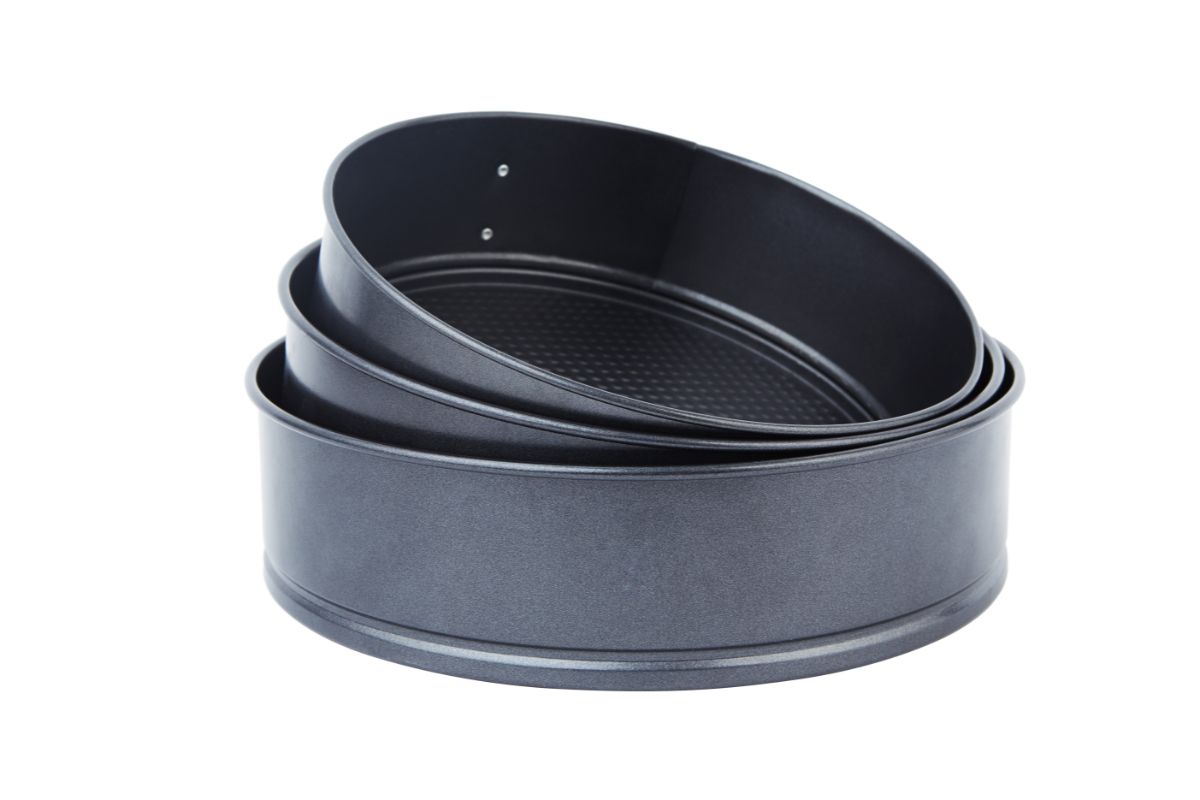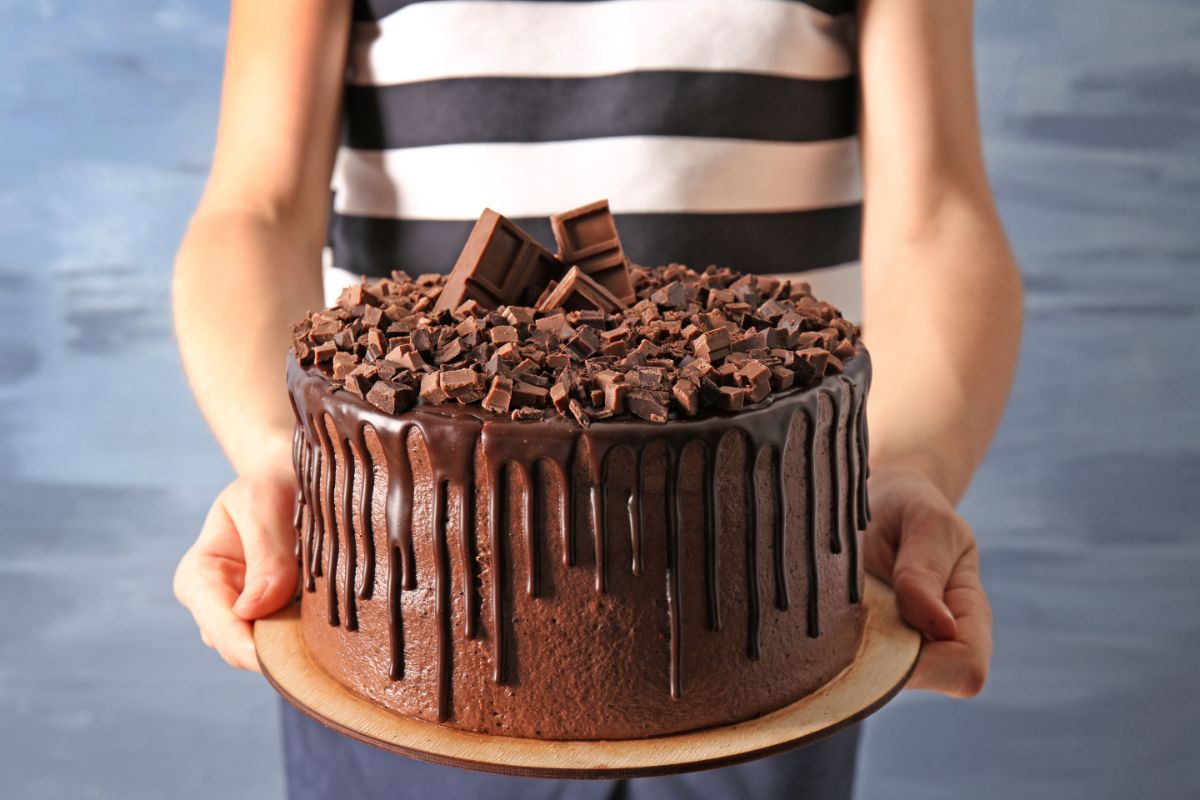If you want to bake or order a cake, you should look around for common cake sizes. Then you can make sure you choose the right size and shape to feed yourself and your guests. Read on to learn more about different cake sizes.
Portion sizes for round cakes
Round cakes are popular, especially for weddings and other parties. You can slice them like a slice of pie or pizza, leaving the pieces relatively even.
Now you should decide whether you want to cut small or large pieces. Pieces smaller than two inches work well for weddings. However, you can cut pieces larger than two inches for other parties.

Consider some of the following serving sizes for round cakes.
| Pan Size (inches) | party service | wedding portions |
| 4 | 2 | 4 |
| 6 | 8th | 12 |
| 7 | 12 | 22 |
| 8th | 15 | 24 |
| 9 | 22 | 32 |
| 10 | 30 | 38 |
| 12 | 45 | 56 |
| 14 | 65 | 78 |
| 16 | 90 | 100 |
Round cakes are perfect for everything from birthdays to weddings. You can combine different sizes to make a tiered cake, or use several of the same size for a simpler design.
Square cake portion sizes
While not as common as round cakes, square cakes are another great option. They can be a useful basis for creating a unique cake design. After baking, you can cut the cake and shape it into a new shape, e.g. a triangle.
As with round cakes, different square cake sizes result in more or less servings. Keep in mind whether you want to serve the cake as is or cut it into a unique shape.
Here are some popular sizes and how many servings you can get out of each.
| Pan Size (inches) | party service | wedding portions |
| 6 | 12 | 18 |
| 8th | 24 | 32 |
| 10 | 35 | 50 |
| 12 | 50 | 72 |
| 14 | 80 | 98 |
| 16 | 90 | 128 |
Slicing a square cake is more like a sheet cake. You probably won’t get triangular slices, but you can still serve the cake for you and your guests to enjoy.
Portion sizes for sheet cakes
Sheet cakes are another popular type of cake and you can choose from a few different sizes depending on how much cake you want to bake. In many cases you’ll be serving a single layer cake, but you could layer smaller sheet cakes on top of larger ones.
As with square cakes, cut them across rather than like a pie. However, this can make it easier to get the right size and shape of a desired slice.
Consider the following sheet cake size options.
| Pan Size (inches) | party service | wedding portions |
| 7×11 1/8 | 20 | 35 |
| 9×13 1/4 | 48 | 56 |
| 11×15 | 70 | 80 |
| 12 x 18 (half sheet) | 108 | 120 |
| 18 x 26 (entire sheet) | 108 | 135 |
Sheet cakes are a great choice for many events and occasions. The beauty of them is that you can leave the icing on by simply using it on top. Alternatively, you can remove the cake from the mold and add more icing on the sides.
The most popular cake pan sizes
Whether you want to create your own recipe or follow an existing one, you may be wondering what size cake pans to use. A recipe reveals it, of course. However, if you haven’t decided on one, you should consider which pan sizes to add to your collection.
Here are some of the most popular cake pan sizes for each type.
Round cake pans
The most popular round cake pan size is 8 or 9 inches, which can give you 15 to 32 servings. You’ll find that many boxed cake mixes have directions for one or both sizes.
Pans of these sizes are easy enough to find at the grocery store. You can also find both reusable and single-use round cake pans with a diameter of 8 or 9 inches.

Square cake pans
Square cake pan sizes are very similar to round cake pan sizes. The most common size in this category is either the 8 x 8 or 9 x 9 inch pan, and you can get 24 to 32 servings.
As with round cakes, many boxed cake mixes have instructions for baking this size. A good mix will usually fill two of these square cake pans.
sheet cake pans
Sheet cake pans are great, but some of the larger ones can feel unwieldy. The most popular size for this type of pan is the 9 x 13 inch variety, which produces 48 to 56 servings.
You can almost always find directions for this size on boxed cake mixes. That makes this size a good option for your kitchen.
How do I choose the right cake size and type?
When comparing cake sizes, you may be wondering which size and type to use. Consider the following factors when choosing the best cake pan for your next baking project.
Start with the recipe
Of course, if you’re baking from a recipe, you must use the cake pan that the recipe calls for. It should tell you the size and shape you should use.
Baking is like a science, so make sure you follow the directions as closely as possible. This way you can ensure the cake cooks through while it’s in the oven.
Well, some recipes will give you a few options for cake pans. In this case, you can choose the one you prefer.
Check out your cake pan collection
If you have a few pans to choose from, check out your collection. Consider if you have specific sizes and shapes, or if you need to buy any.
You can always buy more cake pans, which is a good idea if you bake often. However, if you rarely bake, you may want to stick with what you have.
Alternatively, you can look for a disposable cake pan in the size and shape you need. Then it won’t take up space in your kitchen after you use it.

Consider the occasion
Another thing to think about is what you’re baking a cake for and whether a size or shape would make more sense. If you’re baking for a large party, you may want to use larger cake pans.
On the other hand, if the cake is just for you and a few friends, keep it small. Adjust your recipe accordingly so you can bake enough cakes.
You should also consider creating layers. This is easiest to do with round cake pans, but you can also make a pyramid with square shapes.
Think about the portions
Not only should you consider how many people will be eating the cake, but also how many servings you want in total. The exact number depends on how big the cake is.
However, you should also think about how large each serving will be. Smaller portions are more common for weddings and other formal events.
However, if you’re baking for a more casual party, consider serving larger pieces. In this case, you may need to bake a larger cake.
Don’t forget other treats
If you’re baking cakes for an event, consider serving other sweet treats. For example, many people like to have ice cream with their cake.
But maybe you also offer your guests sweets or other sweets. In this case, not everyone will have a piece or such a large piece of the pie.
You could get away with making fewer cakes if you have other desserts for people to eat. On the other hand, if cake is going to be the main dessert, bake more of it.
Also, consider serving other foods, such as lunch or dinner. If the cake is the only thing people eat, you might want to offer more.
Decide if you want leftovers
You don’t have to eat the whole cake in the same day. Sometimes it’s nice to have a piece of cake left over the day after a big party. In addition, many couples save a piece of cake for their first wedding anniversary.
Either way, you may want to decide how much of the cake you want to keep after the event. Then you can make sure to choose a larger cake pan.
Alternatively, you could use a few smaller pans so you have a multi-tiered cake. If you know you’ll want leftovers, set aside part of the cake before serving.
Combine different sizes
Some of the best cakes have multiple layers. Of course you can use several layers of the same size, which is common for birthday cakes, for example.
However, you might want a tiered cake for a wedding or similar event. In this case, you should choose a few different sizes that all go together.
One of the best options are round pans with straight diameters. Then you can increase the size by two inches each time. The cake will look better than if it increases in size by 2.5 cm, then by 2 cm and so on.
